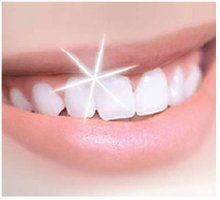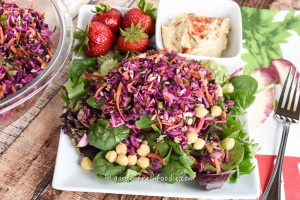
Foods That Stain Your Teeth
 Are there some foods that stain your teeth? Can some plant foods harm your enamel? Well, that depends. Many plants have acidic properties to them outside of the body (they actually turn basic when digested), and can cause staining on the teeth. The staining on your teeth doesn’t mean your dental structure isn’t healthy, however it can lead to issues if your periodontal health is being impacted. There are some definite “foods” that are best to avoid, include sugary snacks and beverages, like sodas, refined juices, and wine.
Are there some foods that stain your teeth? Can some plant foods harm your enamel? Well, that depends. Many plants have acidic properties to them outside of the body (they actually turn basic when digested), and can cause staining on the teeth. The staining on your teeth doesn’t mean your dental structure isn’t healthy, however it can lead to issues if your periodontal health is being impacted. There are some definite “foods” that are best to avoid, include sugary snacks and beverages, like sodas, refined juices, and wine.
Foods That Stain Your Teeth:
- Coffee/Dark Teas: dark colors and acidic qualities will cause teeth to become more porous and open to discoloration
- Sodas & sports drinks-due to their high acidic and sugar contents, these beverages make the teeth softer and very open to staining. They also lead to excess calorie consumption and increased inflammation in the body.
- Red Wine
- Berries, pomegranates, grapes
- Beets
- Tomato Sauce
- Soy Sauce
- Dark Balsamic Vinegars
- **Kimchi, kombucha and other fermented foods-while they may not stain your teeth, they can damage enamel with their low pH
Foods that Boost Dental Health: All fruits and veggies contain micronutrients and have anti-inflammatory properties. The best of all of these are:
- Dark leafy greens & Cruciferous veggies: kale, collards, swiss chard, broccoli, cauliflower, cabbage, kohlrabi (and others)-all contain LOTS of vitamins and minerals. Best for dental health are their high levels of Vitamin A, phosphorus, magnesium, and calcium, all of which help to boost bone and dental health
- Fresh fruits-fruits like peppers (yup, they’re a fruit!), cucumbers, melons, citrus (however-the citric acid in citrus fruits has a low pH/high acidic content, so be sure to swish your mouth with water after eating), pineapple, and others contain high amounts of Vitamin C which helps to decrease inflammation and boost gum health. ***See acid content in foods below
- Crunchy root veggies-root veggies provide a lot of fiber (all veggies do) and crunch. Their crunchiness helps to break away stains and to clean your teeth, so eat them at the end of meals. Great root veggies to try are: raw carrot, turnips. radishes, rutabagas, jicama, and kohlrabi.
Tips on What To Do BEFORE eating foods that stain your teeth:
- Eat dark leafy greens before you consume sauces and berries. Dark leafy greens create a film on the teeth and protect them from acidifying foods that can cause foods to become more porous and open to staining
What To Do AFTER eating foods that stain your teeth:
- Crunchy foods act as a detergent for your teeth. Foods like raw carrots, cauliflower, and celery helps to wash away stains on the teeth naturally.
- Rinse with water, and wait 30 minutes to 1 hour before brushing. After eating acidic foods, the enamel on your teeth has softened. By brushing too soon, you can wear away the protective enamel. Waiting until the teeth re-mineralize is best. Swish your mouth with water and wait 30 minutes, to remove food residue and the potential for foods that stain your teeth without damaging the structure of your teeth.
Check out this video from www.nutritionfacts.org on plant-foods and oral health
If you’re still having trouble, we recommend using an electric toothbrush to brush your teeth, and come and see us at our office in Williamsville, NY if you have questions about teeth whitening or your dental health.
For some great veggie recipes and ways to boost your vegetable intake, check out Garden Fresh Foodie!
Recipes like this Red Cabbage Slaw is a recipe that highlights foods for dental health!
Foods with low pH/high acid. PLant foods are acidic prior to digestion. Saliva does help to break down the foods, and after digestion these foods actually turn alkaline (basic). However, when they hit your teeth, they can cause enamel to become softer. When consuming acidic foods, be sure to rinse with water afterwards and wait 30 minutes to 1 hour before brushing. For an expanded list of foods, click here for a FDA list. This list was sampled from an article found here.
Apples: 3.3-3.9
Apricots: 3.3-4.0
Blackberries: 3.9-4.5
Blueberries: 3.1-3.3
Cherries: 3.2-4.1
Frozen cherries: 3.3-3.4
Dill pickles: 3.2-3.7
Grapes: 2.8-3.8
Grapefruit: 3.0-3.8
Ketchup: 3.9
Lemon juice: 2.0-2.6
Lime juice: 2.0-2.8
Mangoes: 3.4-4.8
Nectarines: 3.9-4.2
Olives (green, fermented—black fresh or canned ones have a pH of at least 6): 3.6-4.6
Peaches: 3.3-4.1
Pears (Bartlett): 3.5-4.6
Pineapple: 3.2-4.0
Plums: 2.8-4.5
Pomegranate: 2.9-3.2
Raspberries: 3.2-3.7
Sauerkraut: 3.3-3.6
Strawberries: 3.0-3.9
Tangerine: 3.3-4.5
Tomatoes (canned): 3.5-4.7
Vinegar: 2.4-3.4
Orange juice: 3.3-4.2
Red wine: 3.4
White wine: 3.0
